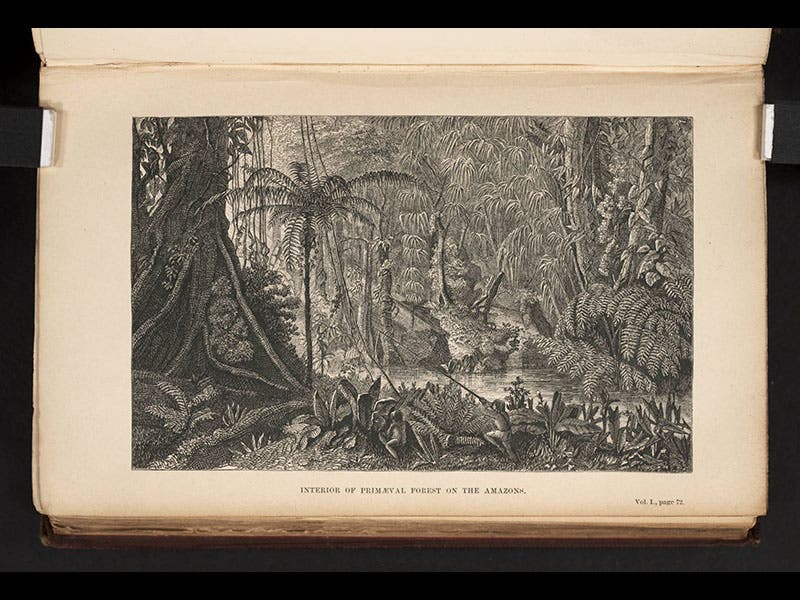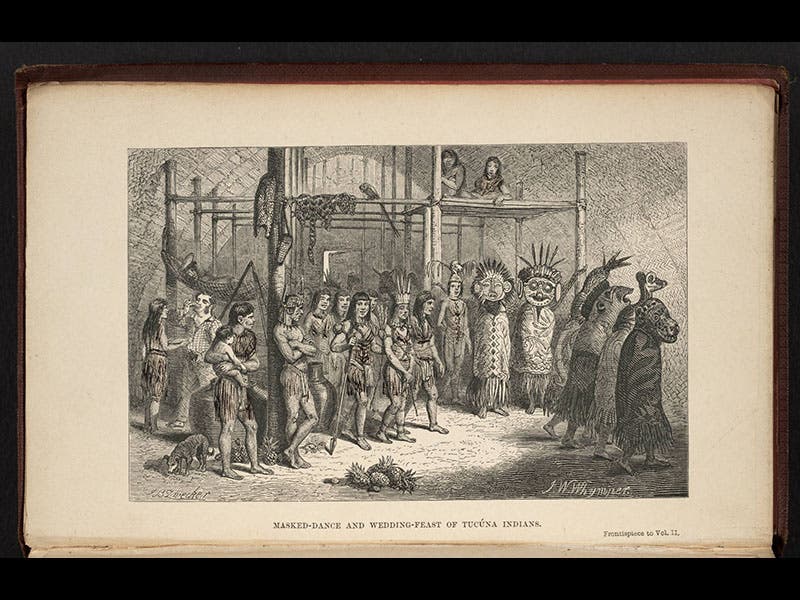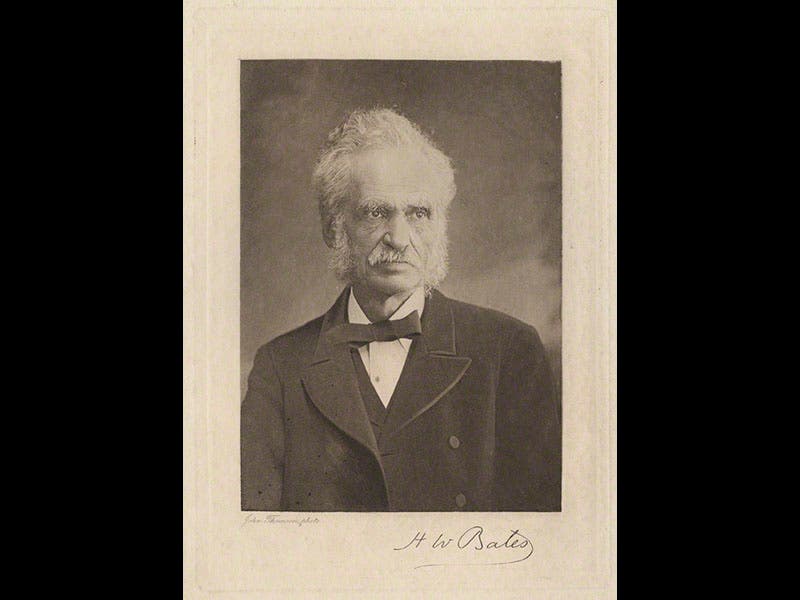Scientist of the Day - Henry Walter Bates
Henry Walter Bates, an English explorer and naturalist, was born Feb. 8, 1825. Bates would become best friends with Charles Darwin and Joseph Hooker, which was most improbable, since Bates came from lower-class provincial stock--his parents made stockings, he left school at age 13 to work, and his travels were paid for by collecting and selling specimens, not by some wealthy father or society patron. Bates established himself in scientific society by travelling to the Amazon in 1848, remaining there for 11 full years, and collecting and identifying some 14,000 new species of living things, mostly insects. Moreover, out of this intense collecting activity came several new observations that advanced the cause of Darwinian evolution (the Origin of Species was published the same year that Bates returned from the Amazon). In 1862, Bates delivered a paper to the Linnean Society of London in which he pointed out that many South American butterflies that are palatable to birds have evolved to resemble totally unrelated species of butterflies that are toxic to birds. Such resemblances are now referred to as examples of Batesian mimicry, which was used for many years to explain why the Viceroy butterfly resembles the distasteful Monarch, until it was discovered that the Viceroy tastes even worse. But there are many other examples of mimicry that are truly Batesian.
Bates’ narrative on his adventures in South America, The Naturalist on the River Amazons (1863) has always been a best-selling traveler’s adventure book; we have a copy in the History of Science Collection, and it is sprinkled with attractive engravings, some of which we include above. The first four images depict, in order: fishing for turtles with an alligator intruder; the primeval forest; a great anteater fighting with a dog; and a wedding feast and dance of the Tucúna natives. Because Bates was of low birth, no one at the National Portrait Gallery in London made any effort to collect portraits of Bates; all they have is one photogravure taken of him when he was an old man (fifth image). Fortunately we have the frontispiece of his book (sixth image), which depicts Bates in action, as I am sure he would prefer to be remembered.
Dr. William B. Ashworth, Jr., Consultant for the History of Science, Linda Hall Library and Associate Professor, Department of History, University of Missouri-Kansas City. Comments or corrections are welcome; please direct to ashworthw@umkc.edu.












